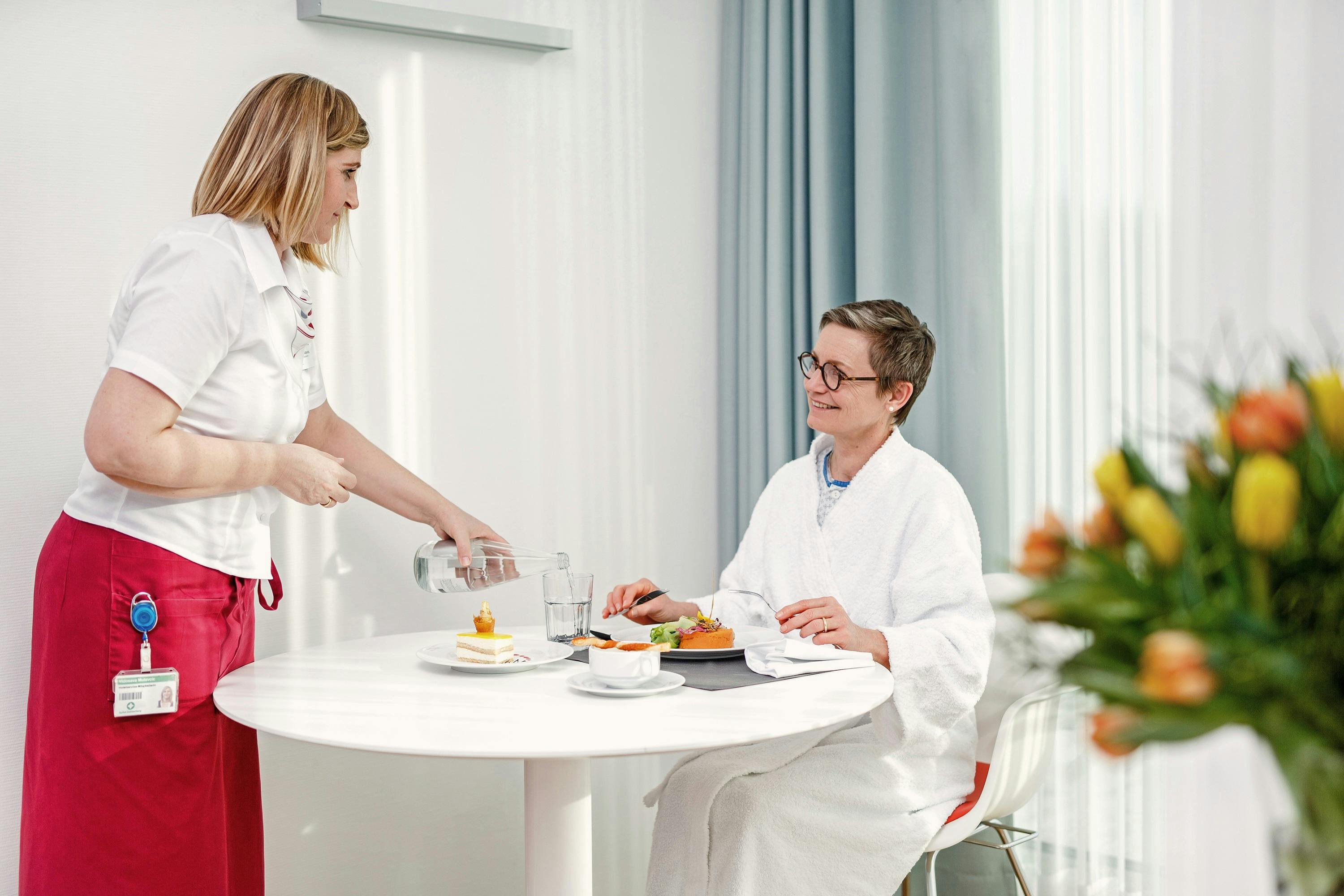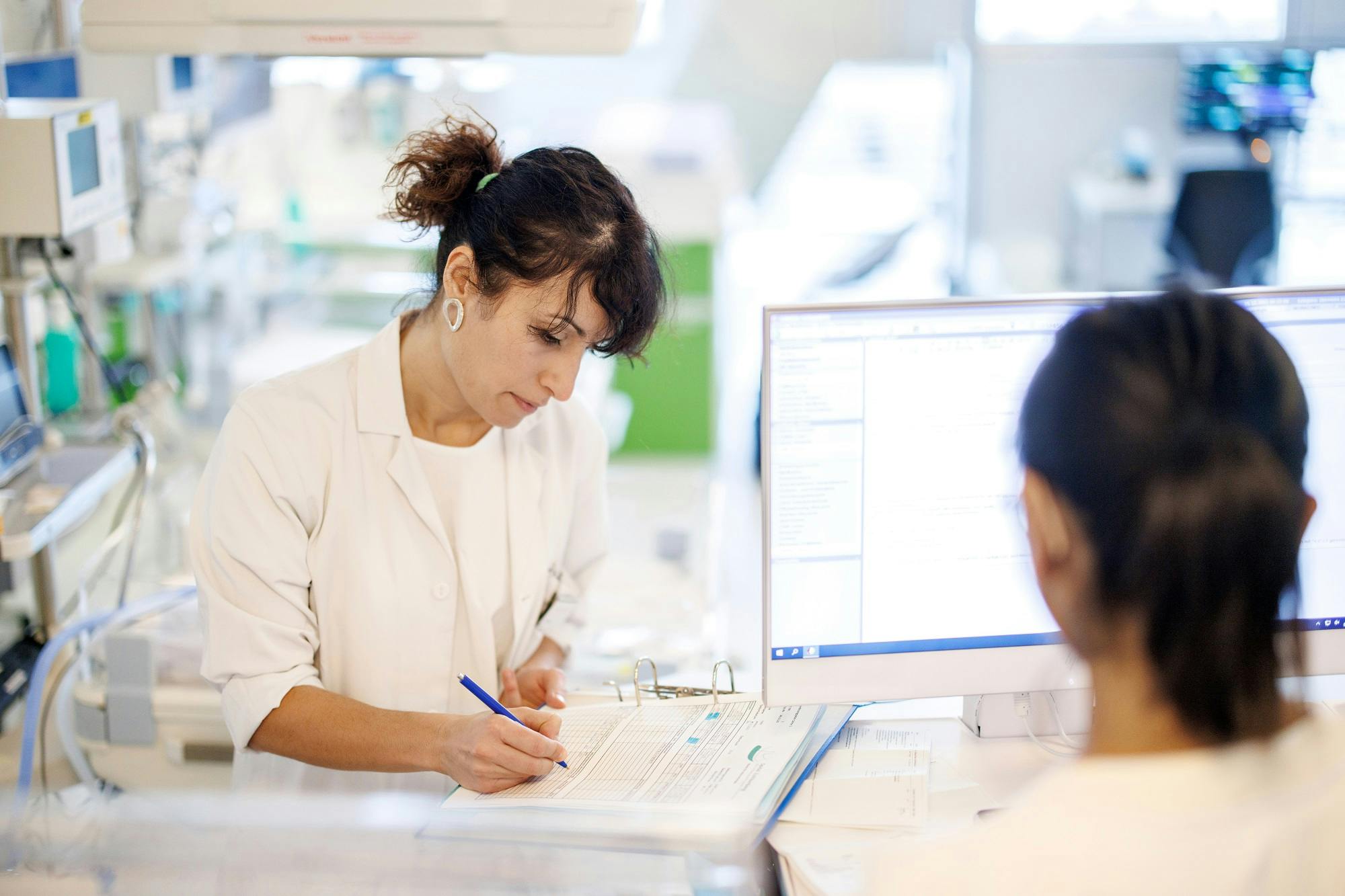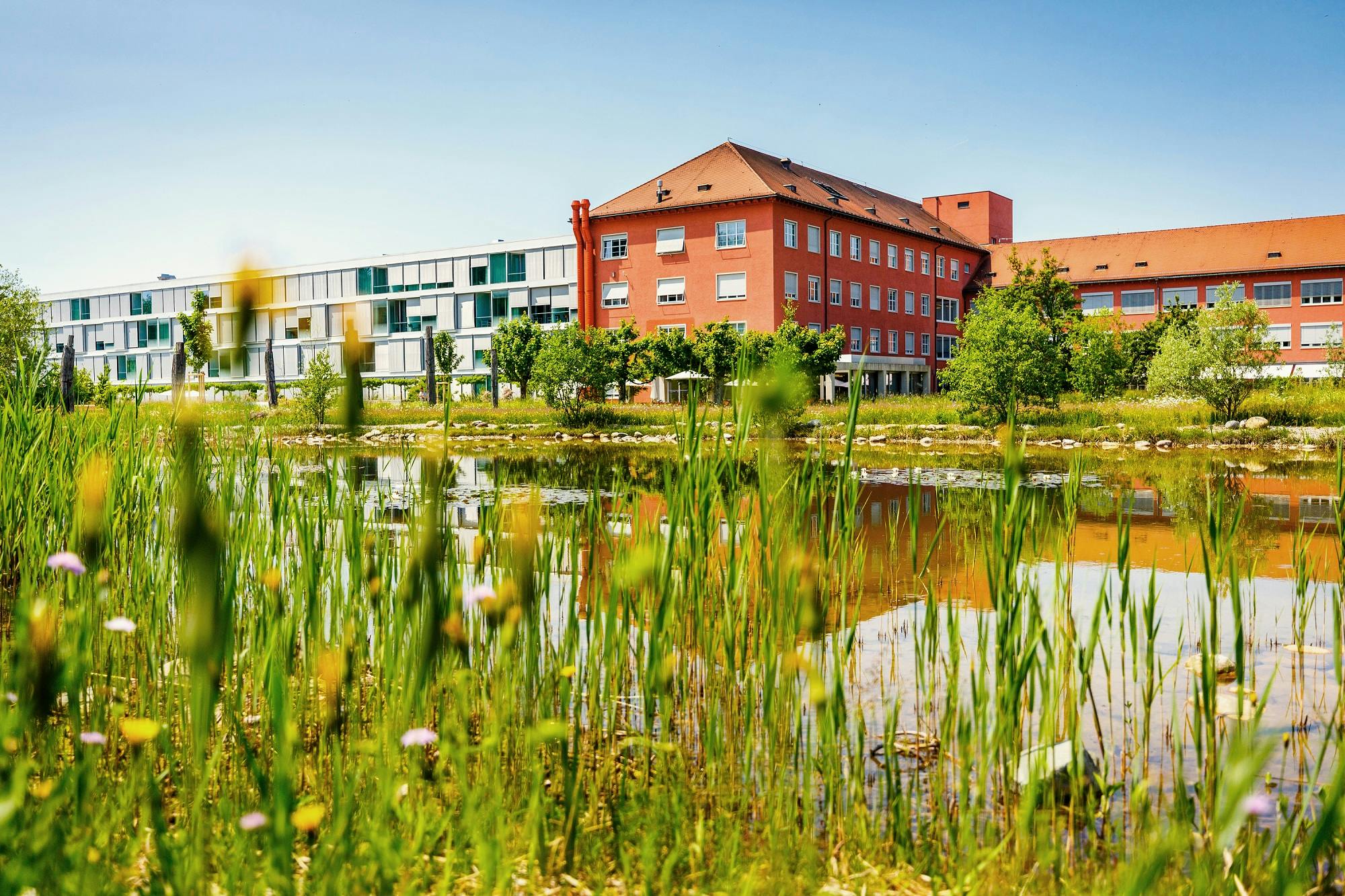Are you a suitable patient for "Visit - Spital Zollikerberg Zuhause®"?
Dr. med. Elisa Heising
January 11, 2023
15 min
Dr Heising, the additional service "Visit - Spital Zollikerberg Zuhause®" has been around for a year now. Tell us: what is it all about?
"Visit - Zollikerberg Hospital at Home®" is a service that enables us to treat acutely medically ill patients in their own homes instead of caring for them on the ward in our hospital. It is an innovative project of the Stiftung Diakoniewerk Neumünster - Schweizerische Pflegerinnenschule, the sponsor of Zollikerberg Hospital. "Visit" is based on the "Hospital at Home" approach, which is already established in many countries - but is still something new here in Switzerland. We are very fortunate to be able to implement this project at Zollikerberg Hospital.
You say that the offer applies to patients with an acute medical condition. Are there additional criteria for someone to be eligible for the programme?
"Visit - Spital Zollikerberg Zuhause®" is aimed at patients of all age groups who would require acute medical hospitalisation for certain diagnoses or a certain severity of illness. The selection of patients for "Visit" is based on factors such as the clinical picture, whether the treatment can be carried out at home and whether the patients can imagine being treated at home. Of course, organisational factors such as the infrastructure at home, the social system and the reach of Zollikerberg Hospital also play a role here. It is important to realise that "Visit" is not "intensive care at home", but treatment that corresponds to inpatient hospital treatment.
What does the "Visit" process look like? What does the patient have to expect?
As usual, patients are referred to Zollikerberg Hospital by their GP, brought in by the ambulance service or they come to our hospital via the emergency ward. There, we first carry out the necessary investigations to determine what the patient is suffering from and draw up a treatment plan together with the specialists on site at the hospital.
We then ask ourselves the question: would it be possible to treat this illness with "Visit" at home? To do this, we determine whether the patient's vital signs are stable enough - in other words, there must not be anyone who requires intensive medical care. If the patient's general condition allows them to be cared for at home, we look at which therapies are necessary and whether these therapies can be implemented at home. Here we are talking about oxygen administration or respiratory therapy, for example. The next questions we need to clarify are Does the patient want to be cared for at home? Is a social support system guaranteed? Is the patient able to look after herself or does she have sufficient support from relatives? If we find satisfactory answers to these questions, we organise transport home from the emergency ward.
The "Visit" team introduces itself to the patient and from then on is the treatment team. The medical treatment at home begins: there is a daily doctor's visit, an additional senior doctor's visit three times a week and nursing visits at least twice a day for the early and late shift - and more if additional interventions are required, for example if the patient is unwell or requires further therapy.
In addition to the ward rounds, the patient is also monitored using telemonitoring: there is a small electrode that sticks to the chest and continuously measures the heart rate, respiratory rate and, in some cases, oxygen saturation. This allows us to check the patient's general condition and recognise any deterioration at an early stage.
0/0
That sounds very exciting! But one thought occurs to me: Treatment at home can't possibly be as safe as in hospital...
It's true that even I, as a doctor, could hardly imagine that at first. I also had this idea that the hospital was a safe place - there are doctors and carers there who are on duty around the clock. However, our positive experience with "Visit" is that we can make the home environment at least as safe a space as the hospital thanks to the structure we provide during treatment at home. And for certain patients, especially older people, it is even safer at home, as the familiar surroundings give them a sense of security per se. In hospital, it is more difficult in these cases because the rooms are different, for example, patients can't find their way to the toilet at night, stumble over the infusion stand or can't find their way around because everything looks different from home. The familiar surroundings at "Visit" provide orientation and support, especially for older patients. At the same time, we also offer security by using telemonitoring to monitor patients and by primarily selecting patients so that it is possible to treat them at home. We are also available around the clock for nursing and medical care - so overall, we are very close to our patients.
And what happens if an emergency does occur?
Firstly, we have three different alarm systems at "Visit". The first is the patients themselves, who can call us at any time and tell us that they don't feel well, whereupon we personally get a picture - we can be at their home within a maximum journey time of 15 minutes. The second is when a relative calls and says that the patient is not feeling well. And the third is telemonitoring, which alerts us and indicates that something is wrong.
In an absolute emergency, i.e. if the patient is at risk of death, the "Visit" team immediately alerts "Protection and Rescue", which would preferably take the patient to Zollikerberg Hospital, where he or she would be hospitalised on a secondary basis. What you have in mind - sudden cardiac death or sudden unconsciousness - can also happen in hospital, mind you. We mainly have single rooms and even here, patients cannot be monitored around the clock.
If the patients are not at risk of death, we go straight to them - just like we do on the ward in the hospital. The patient rings the bell, the nurse goes there and calls the duty doctor again. During the visit, we then decide as a team on site whether we can continue the treatment at home or whether the patient's general condition has deteriorated to such an extent that he or she needs more intensive care or therapy, which is only possible in hospital.
Let's talk about your personal experiences in this first year of "Visit". What is the most formative thing you have experienced?
Firstly, I have to say that I am absolutely delighted with the project. Because it simply gives us a much more holistic perception of the patients. We see them in their home environment, with their own resources, how they live, what their family structures are like, how they eat - that makes a huge difference. We recognise how we can provide additional advice to achieve a sustainably higher level of health. I was very impressed by this and I am convinced that with "Visit" we are offering and providing better medicine in the long term, precisely because we can take a more holistic view of the patient. Medicine is not just about administering medication, but also about changing habits, diet, exercise - simply general health promotion, and we have more options in this respect with "Visit".
It's also a new experience for me: with "Visit", I am a guest of the patients as a doctor. This shifts my role as a doctor and enables a new level of relationship between patient and doctor. It gives me the opportunity to learn more about the patients and get closer to them. Hierarchies are broken down and patient autonomy is strengthened as a result. As a doctor, I am more of a helper and have a less authoritarian role than in hospital.
These are very positive impressions and realisations. Did you also experience any scary moments?
Yes, we really did have a scary moment that we learnt from: We couldn't reach the patient by phone and the telemonitoring was interrupted. So we travelled there immediately and rang the doorbell at the patient's home, to which he didn't respond. We were very worried - but just before we were about to gain access to the flat to make sure he was OK, he opened the door in a daze. It turned out that he hadn't heard the phone and his doorbell was broken - one technical fault after another. We were all very relieved and glad that the patient was okay. We then introduced the new rule that we always have a second key for patients who live alone at home so that we can quickly gain access in such emergency situations.
We learnt an incredible amount from these and other situations in the first year of "Visit" and adapted accordingly. We were able to optimise processes to become even faster and work better together as a team - but I can say that these learnings were never at the expense of patient safety, which on the contrary was always in very good hands. If anything, it was technical findings or internal processes that we improved.
To conclude the interview, let's take a look into the future: what are your wishes or plans for "Visit"?
I hope that "Visit" will not remain a pilot project, but that the possibility of providing patients with acute medical treatment at home will become an integral part of our healthcare system. Alongside this, I would like to see a rethink among doctors, carers and patients alike that the hospital is not the only safe place, but that at least the same level of quality and safety can be provided at home, leading to better overall health promotion in the long term. In other words, that it is established in people's minds and that it is a regular offer in the healthcare system that people can trust.
And my second wish is that we extend "Visit" to more patients and that the structures become more fluid - for example, that we can also care for palliative patients who need medical treatment at home for much longer.
0/0
Weitere Beiträge
Latest news
More oncological safety during breast-conserving operations at the BreastCentre Zurich thanks to innovative navigation with the "Breast Cancer Locator"
The innovative navigation tool at the BrustCentrum Zürich is revolutionising the treatment of breast-conserving surgery through precision, safety and better aesthetic results. As the only breast centre in Zurich to offer this procedure, we are proud to give our patients access to this first-class technology.
Latest news
Welcome to the "Zollikerberg World of Health"
Latest news
Zollikerberg Hospital launches birth centre


